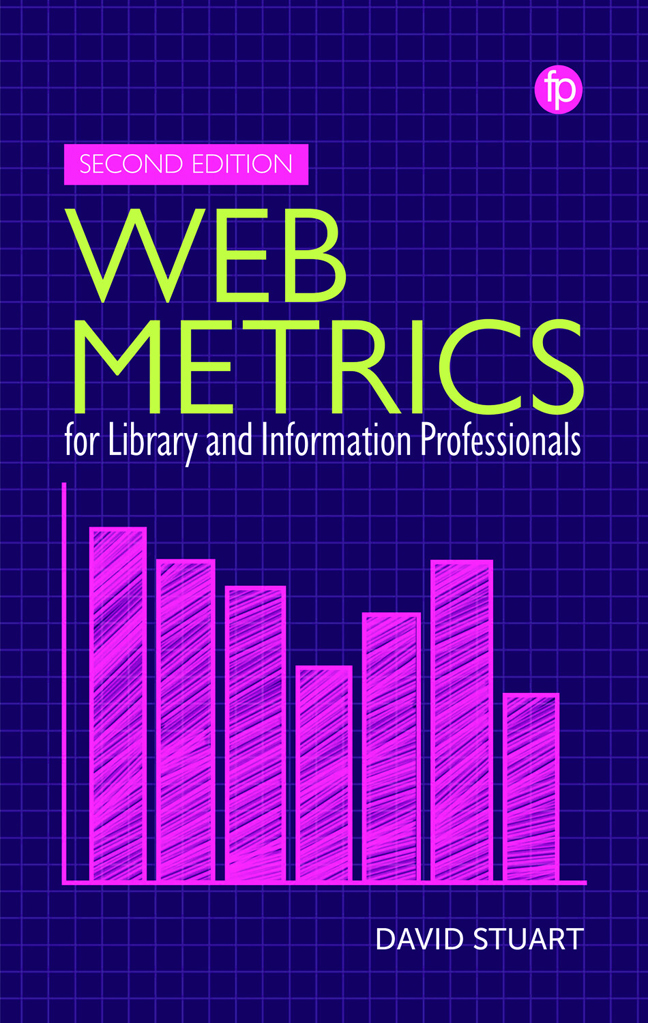Book contents
- Frontmatter
- Contents
- Figures and Tables
- About the Author
- Preface to the Second Edition
- 1 Introduction
- 2 Bibliometrics, Altmetrics, Web Metrics and Webometrics
- 3 Data Collection Tools
- 4 Evaluating Web Impact
- 5 Evaluating Social Media Impact
- 6 Relational Web Metrics and Social Network Analysis
- 7 Web Bibliometrics
- 8 Web Metrics for Data and Code
- 9 The Future of Web Metrics and the Library and Information Professional
- References
- Index
5 - Evaluating Social Media Impact
Published online by Cambridge University Press: 20 December 2023
- Frontmatter
- Contents
- Figures and Tables
- About the Author
- Preface to the Second Edition
- 1 Introduction
- 2 Bibliometrics, Altmetrics, Web Metrics and Webometrics
- 3 Data Collection Tools
- 4 Evaluating Web Impact
- 5 Evaluating Social Media Impact
- 6 Relational Web Metrics and Social Network Analysis
- 7 Web Bibliometrics
- 8 Web Metrics for Data and Code
- 9 The Future of Web Metrics and the Library and Information Professional
- References
- Index
Summary
Introduction
Much of the information that is placed online is not on an individual's or an institution's personal server but, rather, makes use of external sites and services: images are uploaded to Instagram, videos to YouTube, presentations to SlideShare and comments to Twitter. Such sites and services not only ease the publishing process for individuals but also enable the delivery of content that has the potential to go viral. There are advantages and disadvantages in this for web metrics. On the one hand, external sites and services can provide additional or more complete metrics: they provide a large amount of data structured in the same manner, and it is theoretically possible for all data that meets a particular criterion to be retrieved. On the other hand, metrics are severely limited to the functionality that the service allows; although the data may be structured, the website may not facilitate access to this data.
With such a wide range of services available, from a web analytic point of view it is necessary for librarians to ask which services are worthwhile (Vucovich et al., 2013) and at what point to stop spending their time and effort on a service. As with the web metrics discussed in the previous chapter, social media metrics offer the potential for a far wider range of insights than just into a library's own web presence. A handful of individual sites and services with hundreds of millions of users can also provide insights into a range of real-world user behaviours, forming the basis of a wide range of webometric investigations.
This chapter starts by considering the types of social network site that are available and the types of social network site content that librarians may be interested in evaluating. This is followed by a closer look at some of the popular social network sites that may form the basis of a web metric investigation, previous investigations that have taken place and some of the tools that are available.
Aspects of social network sites
The web is dominated by a small number of sites, many of which have incorporated some level of social networking functionality. Boyd and Ellison (2007) define a social network site as comprising three parts, allowing users to (1) construct a public profile in a bounded system, (2) articulate connections to other users and (3) navigate the connections they and others make.
- Type
- Chapter
- Information
- Web Metrics for Library and Information Professionals , pp. 85 - 108Publisher: FacetPrint publication year: 2023

